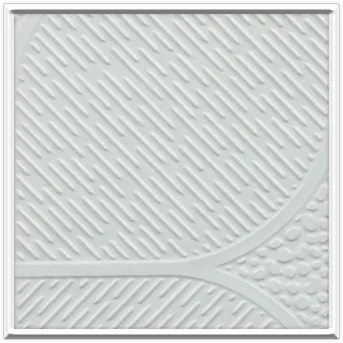Dec . 05, 2024 18:04 Back to list
Ceiling T Bar Hangers for Efficient and Secure Suspended Ceiling Installations
Understanding Ceiling T-Bar Hangers A Comprehensive Guide
Ceiling T-bar hangers are essential components in the construction and installation of suspended ceilings, often referred to as drop ceilings. These hangers play a crucial role in supporting the grid system that holds the ceiling tiles in place. In this article, we will explore the various aspects of T-bar hangers, including their types, installation processes, benefits, and considerations for choosing the right ones for your project.
What are Ceiling T-Bar Hangers?
T-bar hangers are metal supports that connect the grid framework of a drop ceiling to the building's structural elements, such as ceiling joists or concrete slabs. They ensure that the T-bar grid remains stable, level, and securely attached. The grid forms the backbone of a suspended ceiling, providing the necessary support for ceiling tiles while allowing for easy access to utilities hidden above.
Types of Ceiling T-Bar Hangers
There are several types of T-bar hangers available, each designed for specific applications and load requirements
1. Wire Hangers These are the most common type, typically made of steel wire. They are lightweight, easy to install, and suitable for various ceiling heights. Wire hangers are often adjustable, allowing for precise leveling of the T-bar grid.
2. Zinc-Plated Hangers Zinc-plated hangers offer additional resistance to corrosion, making them ideal for humid environments, such as basements or bathrooms. They maintain structural integrity and do not rust, ensuring a longer lifespan.
3. Heavy-Duty Hangers For applications requiring additional support due to heavier ceiling tiles or additional fixtures, heavy-duty hangers made from thicker steel or specialized materials are available. These hangers provide enhanced load-bearing capacity and are ideal for commercial settings.
4. Adjustable Hangers These specialized hangers allow for vertical adjustments without needing to detach the hanger from the support structure. This feature is particularly useful when precision leveling is crucial.
Installation Process
Installing ceiling T-bar hangers involves several steps
ceiling t bar hangers

1. Planning Begin by planning the layout of your suspended ceiling. Determine the height and ensure that the design accommodates any existing light fixtures or HVAC ducts.
3. Installing the Hangers Use appropriate tools to attach the hangers to the marked locations. If using wire hangers, secure them with anchors or screws. For adjustable or heavy-duty hangers, follow the manufacturer’s guidelines for installation.
4. Installing the Grid System Once the hangers are in place, you can proceed to install the T-bar grid. Ensure that all T-bars are level and properly aligned before adding the ceiling tiles.
5. Final Adjustments After installing the grid and tiles, make any necessary adjustments to ensure everything is level and secure.
Benefits of Using T-Bar Hangers
- Versatility T-bar hangers can be used in various settings, from residential renovations to commercial buildings.
- Accessibility Suspended ceilings provide easy access to plumbing, electrical systems, and HVAC equipment, making maintenance and repairs simple.
- Aesthetic Appeal A well-installed drop ceiling can enhance the aesthetic of a room, offering a clean and finished look.
Considerations When Choosing T-Bar Hangers
When selecting T-bar hangers for your project, consider factors such as the weight of the ceiling tiles, the environment (humidity, temperature), and the specific requirements of your space. Consulting with a professional contractor or builder can also ensure that you choose the right hangers for your needs.
In conclusion, ceiling T-bar hangers are vital for the stability and functionality of suspended ceilings. Investing in quality hangers and proper installation can result in a durable, accessible, and aesthetically pleasing ceiling system. Whether for a residential or commercial application, understanding the options and installation processes can enhance your project’s success.
-
Quality Ceiling Trap Doors & Access Panels | Easy & Secure AccessNewsAug.30,2025
-
Durable Ceiling T Grid Systems | Easy InstallationNewsAug.29,2025
-
PVC Gypsum Ceiling: Durable, Laminated Tiles for Modern SpacesNewsAug.28,2025
-
Pvc Gypsum Ceiling Is DurableNewsAug.21,2025
-
Mineral Fiber Board Is DurableNewsAug.21,2025
-
Ceiling Tile Clip Reusable DesignNewsAug.21,2025







